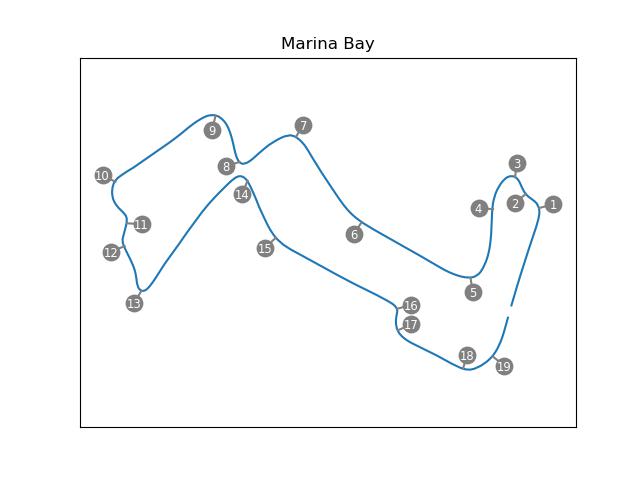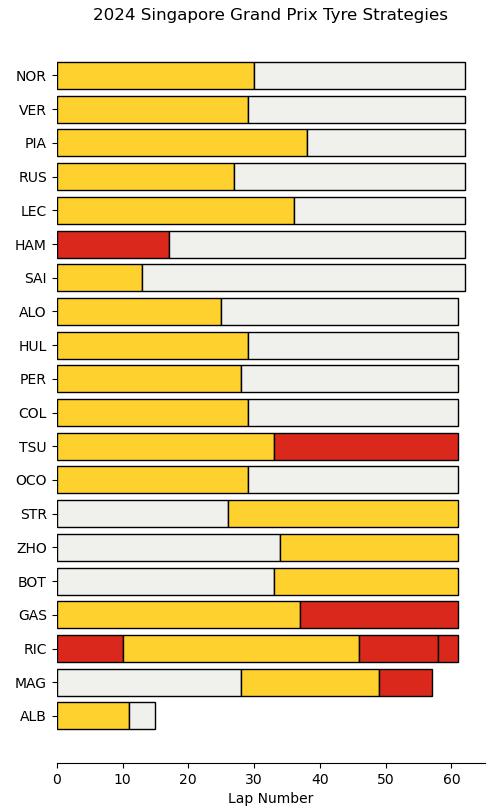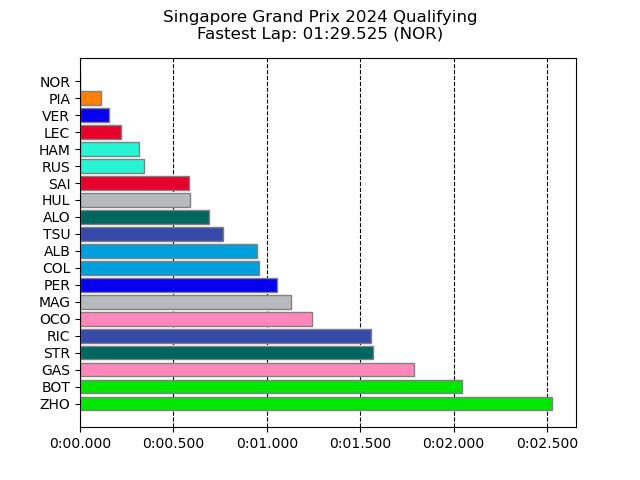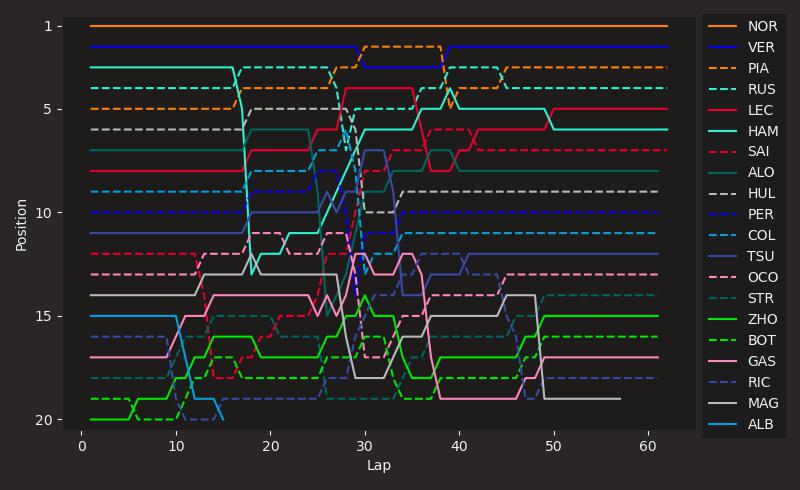Exploratory Data Analysis : Formula 1 2024 Singapore Grand Prix
Formula 1 has been known to be a pinnacle of man-machine performance at its best. It not only tests human endurance, judgment and intelligence but also machine’s speed, reliability and performance. With the advent of AI and progress, advanced cutting-edge technology has made inroads to many a different sports e.g. Chess. This has not only made the sports more interesting but also more competitive. While there have been some misgivings on AI and technology impact, largely I believe that sports have evolved in its natural progression. The strategies, preparation, execution are now more data and AI driven. This change is not only seen in F1, but as general across all sports.
Across different, sports (both indoor and outdoor), we see they have become more evolved and connected through AI, data analysis, and advanced technology, transforming how teams perform and engage with fans. AI-powered tools (such as EDA, scenario modeling etc) analyze vast amounts of data to improve athlete performance, optimize strategies, and predict outcomes. Wearable tech tracks real-time player stats, while machine learning offers insights into injury prevention. This has not only helped on the playing side, but we see massive strides in the spectator side of the experience as well. Enhanced connectivity allows fans to experience games through virtual reality, live data feeds, and personalized content, creating a more immersive and data-driven sports ecosystem.
This triggered my interest in how one can relook at Formula 1 racing, with more data driven insights. Over past decades, Formula 1 has progressively become highly data-driven, using advanced analytics to optimize every aspect of racing. Teams collect vast amounts of data from sensors on cars, monitoring performance metrics like tire wear, fuel efficiency, and aerodynamics in real-time. There are sensors, data collectors, to almost all aspects of the racing, be it start finish lines, gear changes, steering wheel sensors, speed sensors. Thus, it’s now possible to not only collect such vast amounts of data, but also make this available, e.g. FastF1. AI and machine learning algorithms help engineers analyze this data to improve race strategies, vehicle setup, and pit stop timing. Data simulations also play a crucial role in predicting race outcomes, weather conditions, and competitor behavior, making F1 a sport where every decision is backed by data.
This started my quest to get my hands on such data and do data analysis. I as astonished with the amount of information, not only collected, but also made available to public for analysis. Fans who have seen some of the de-brief and race analysis would have seen some of the timing graphs, race position graphs. With the information and some amount of data sleuthing combined with power of python, we can now do expert race analysis, and perhaps prediction of performance.
Find below some of the F1 data analysis for just concluded Singapore Grand prix 2024.
About Race track
The Singapore Grand Prix is held on the Marina Bay Street Circuit, a challenging and iconic Formula 1 race track. As the first-ever F1 night race, it offers a visually stunning experience, with the track illuminated against the city’s skyline. The circuit features 23 corners, tight turns, and narrow straights, demanding precision and skill from drivers. High humidity and heat add to the difficulty, making it one of the most physically and mentally demanding races on the F1 calendar. Its unique setting through downtown Singapore creates an exciting, urban racing atmosphere.

Tire Strategies
Tire strategy is crucial on the Singapore Grand Prix’s Marina Bay Street Circuit due to its tight corners, high humidity, and lack of long straights. The circuit’s abrasive surface and constant braking put significant stress on tires, making managing degradation key to a successful race. Find below the tire strategies that was observed.

Qualification Results

Race position changes

